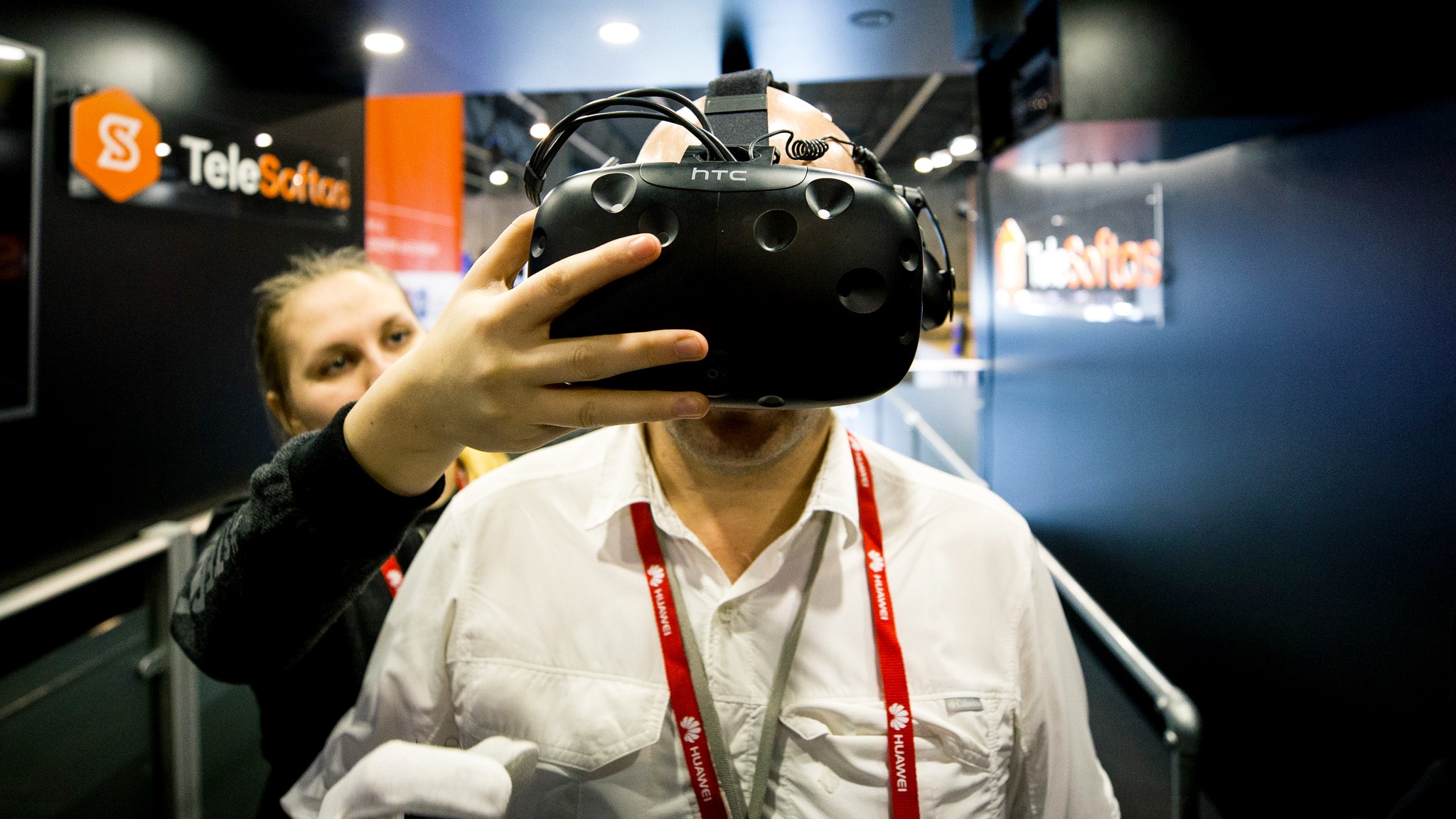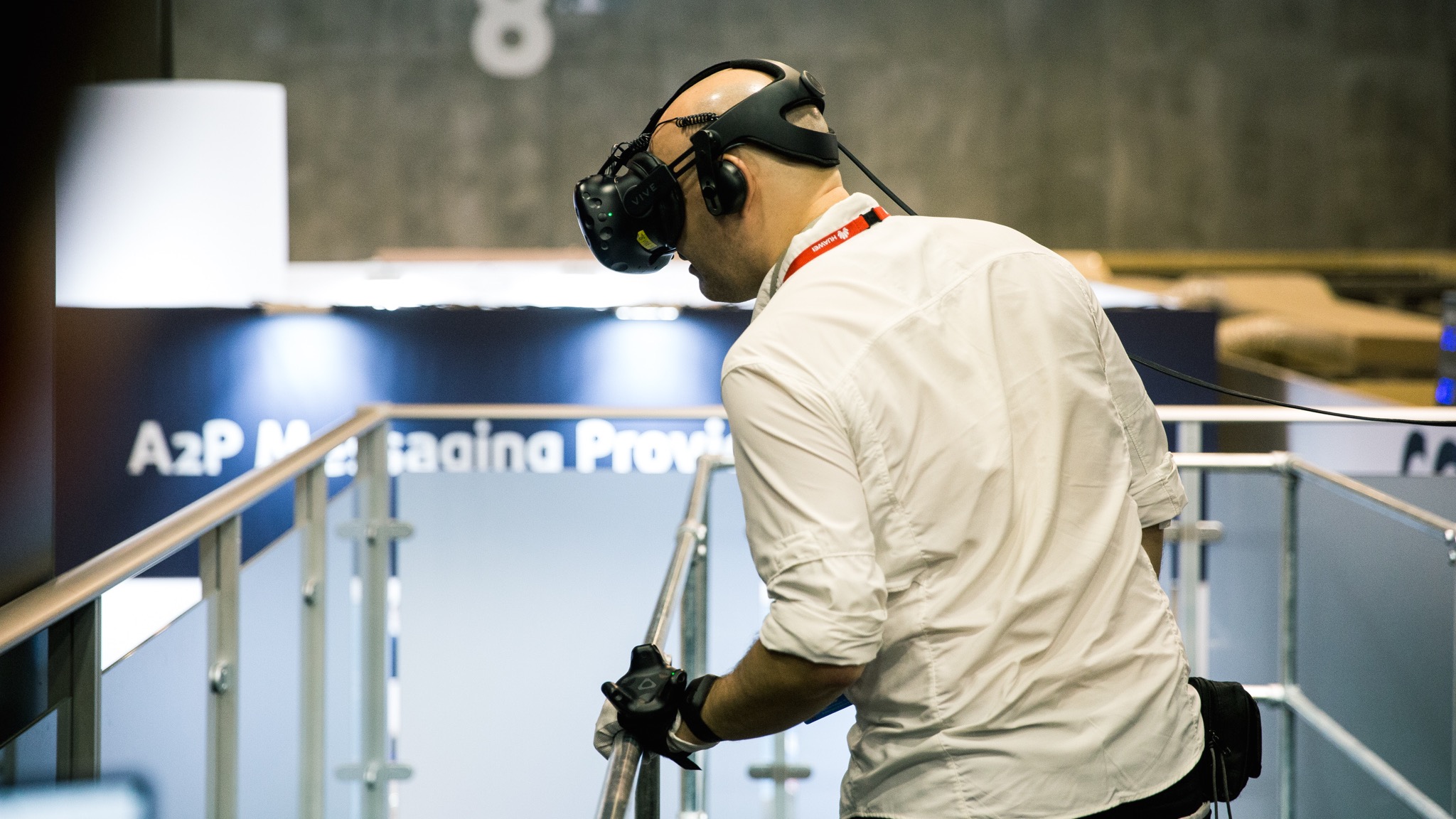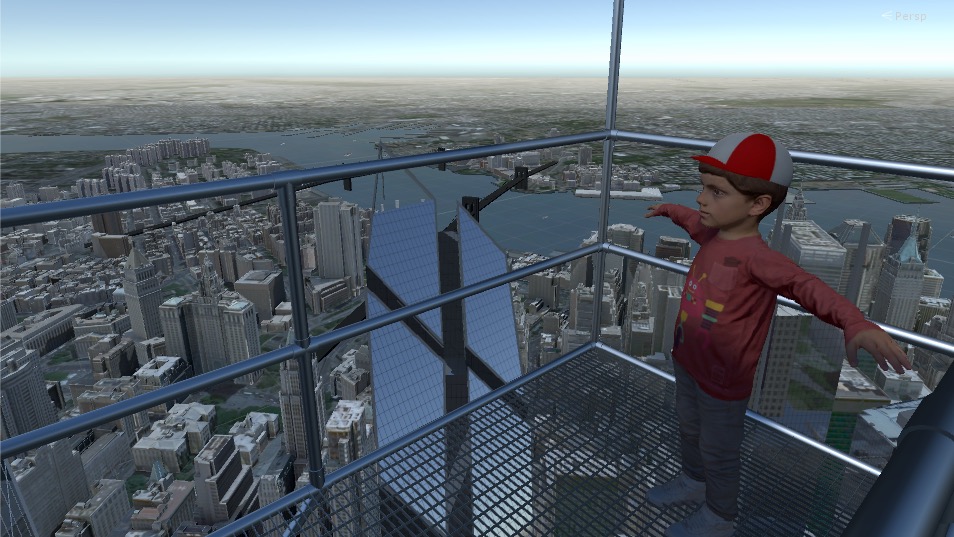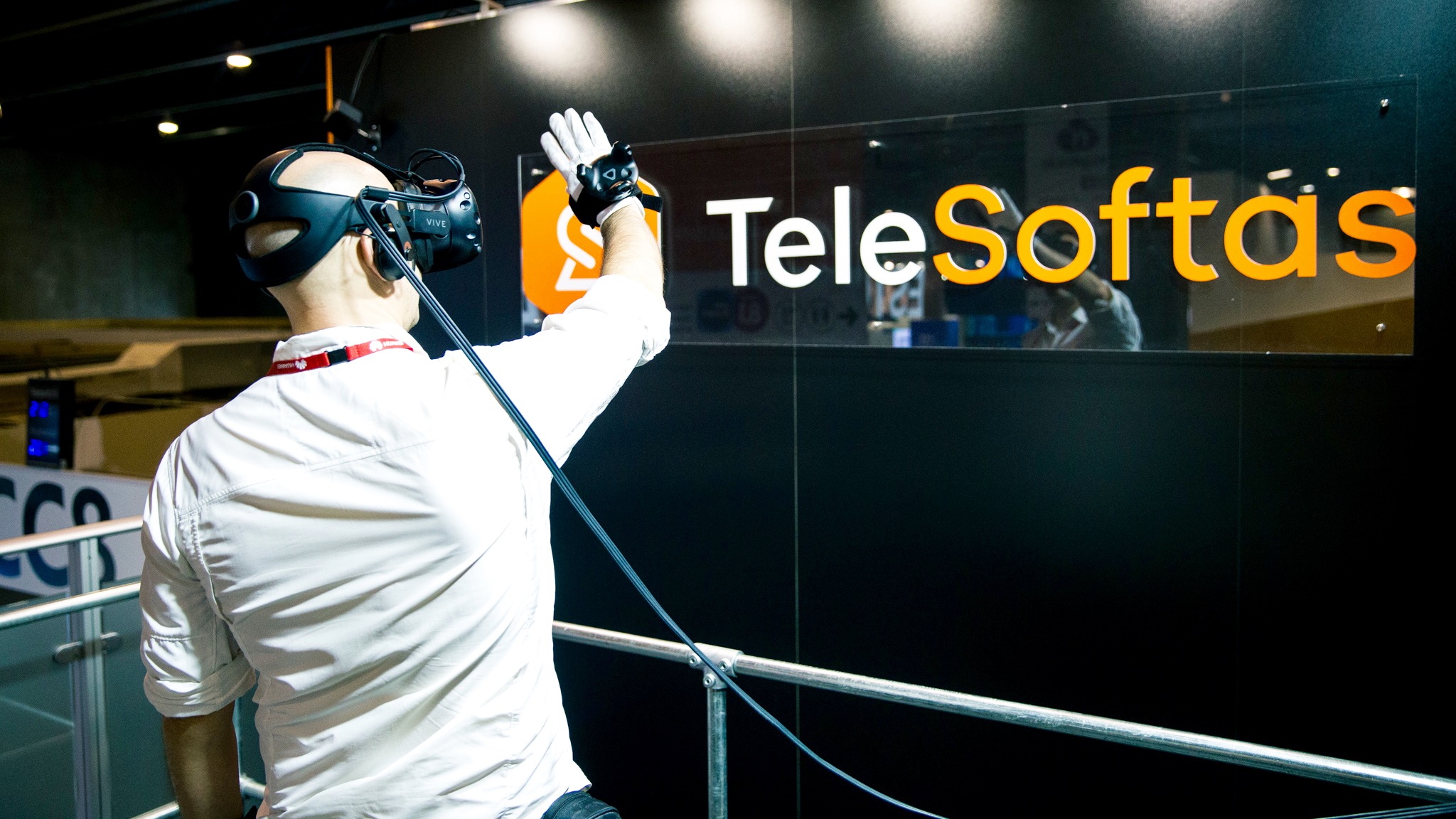How my inner child avatar and an HTC Vive helped me face my fear of heights
Confronting real fears in virtual reality

I'm not good with heights. Sweaty hands, tunnel vision … when I get more than 10 feet off the ground, I start to lose my head. As someone who loves hiking, mountains and sprawling city panoramas, that’s a problem. So when Lithuanian software company TeleSoftas offered to cure my acrophobia at MWC 2018 using an HTC Vive, I was intrigued.
When they told me that my 'inner child' would be taking me to the top of One World Trade Center in New York, I was confused.

Premiering in Barcelona, TeleSoftas' Inner Child VR demo has been designed as a tool for psychotherapists. Part of the problem with treating any kind of mental issue is that psychologists have to ask their patients to imagine being in the situation they fear, or put them in that scenario, where they could be in danger. VR is therefore an appealing alternative; no imagining needed, and no one falls off a building.
"It's actually not for those with a fear of heights, it’s for those with a more extreme phobia of heights," says Audrone Miskinyte, associate professor in clinical psychology at the University of Bergen (UiB) and Vilniaus Universitetas, who will soon be using Inner Child VR in her daily work as a psychotherapist. The first is basically a fear of falling, the other is an illogical aversion to heights that has a physiological trigger. "It's exposure therapy where we control the environment, where the patient can be exposed to what they're afraid of."

Inner Child VR takes place within a a steel rectangle surrounded by a handrail. After donning a headset and a pair of biometric gloves strapped with trackers, the patient appears to be standing on a platform. New York can be seen all around, and crucially, below through a lattice floor. The goal is to get to the end of the walkway … with the help of a child avatar that is programmed to loosely resemble the patient.
"What's new here is that we're using a child avatar," says Miskinyte. It's the first-ever project that applies the principles of 'transactional analysis' theory of the 'free inner child ego state'. The child resembles how the patient was before they got older, and developed irrational phobias. "We have a child, adult and parent position, and we identify with the child," explains Miskinyte. "It's natural, spontaneous, curious, and fun-seeking, and this kind of child can help us overcome our biggest fears – the child can set an example, can encourage, and can distract, and help us overcome our fear." When running the scenario, a psychotherapist can control everything the child does and says to get the patient to move to the end of the walkway.

So how did I do? Really well. "I am you when you were little," says my inner child avatar at the beginning of the experience. "We're going somewhere fun," he says as it becomes obvious that we’re in an elevator. The doors open and … woah! A fabulous-looking lower Manhattan is there all around, and hundreds of feet below. It's a genuinely dizzying feeling, and the first step was hard to take. "Look at that boat!" says the child, distracting me when I stop mid-way to my goal. However, I did eventually follow him right to the end. Halfway through the experience a helicopter arrived, and through a megaphone asked us to wave for a photo. "I have to go now … think of me when you're scared of heights!" says the kid as he walks off the platform.
Sign up for breaking news, reviews, opinion, top tech deals, and more.

Bizarrely, the child started singing 'The Wheels On The Bus' near the end of the experience. "I made him sing to you, and we sent the helicopter in," says Vytautas Kemesis, chief technology officer (CTO) at Telesoftas, from behind a screen showing a third-person view. "We can control what the kid does and says when you need distractions or instructions."

Within seconds there's a readout of my biometrics – including a slightly elevated heart rate – and a heat-map of where I was looking. "Most people look down," says Kemesis. I mainly looked at the view … though always with sweaty hands on a handrail.
Inner Child VR was built using 3D game engine Unity, and TeleSoftas has plans for other VR experiences to cure other anxieties and phobias, such as spiders, flying, and public speaking.
MWC (Mobile World Congress) is the world's largest exhibition for the mobile industry, stuffed full of the newest phones, tablets, wearables and more. TechRadar is reporting live from Barcelona all week to bring you the very latest from the show floor. Head to our dedicated MWC 2018 hub to see all the new releases, along with TechRadar's world-class analysis and buying advice about your next phone.
- Choose the best VR headset for you

Jamie is a freelance tech, travel and space journalist based in the UK. He’s been writing regularly for Techradar since it was launched in 2008 and also writes regularly for Forbes, The Telegraph, the South China Morning Post, Sky & Telescope and the Sky At Night magazine as well as other Future titles T3, Digital Camera World, All About Space and Space.com. He also edits two of his own websites, TravGear.com and WhenIsTheNextEclipse.com that reflect his obsession with travel gear and solar eclipse travel. He is the author of A Stargazing Program For Beginners (Springer, 2015),